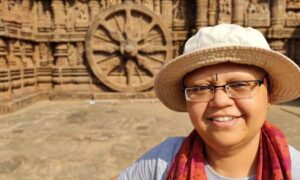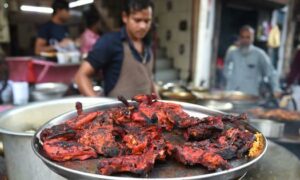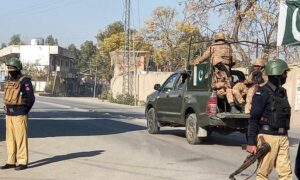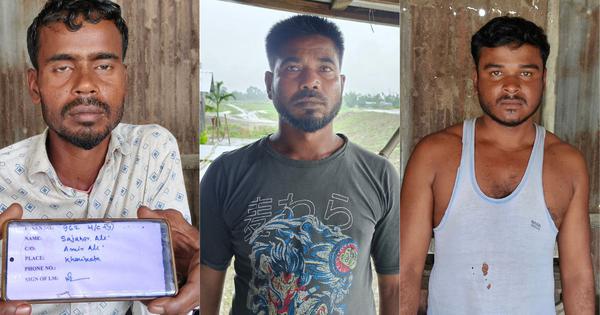
On September 14, on a visit to Assam, Prime Minister Narendra Modi lauded Chief Minister Himanta Biswa Sarma for freeing “lakhs of bighas of land from infiltrators”.
He made special mention of Garukhuti in Darrang district.
In September 2021, the Bharatiya Janata Party government demolished homes of 2,000-odd Bengali-origin Muslim families in the area as they had allegedly encroached on public land.
They were evicted to make way for an organic farming programme meant to create employment only for those considered “indigenous” to Assam.
It turned out to be one of the most violent eviction drives in Assam, with the police opening fire when the demolition ran into resistance. Two people were killed, among them a 12-year-old boy.
Garukhuti set the template for eviction drives in the state under the Himanta Biswa Sarma government, which have often been marked by police excesses.
In the last nine years of Bharatiya Janata Party rule in the state, about 17,600 families, the majority of them Muslims of Bengali origin, have been evicted from government land, according to data provided by the state revenue and disaster management department and district authorities. At least eight Muslims have been shot dead during the evictions.
There is popular support for the action against Bengali-origin Muslims, also known as Miya Muslims, who are viewed in Assam as “illegal immigrants” occupying the land of the “indigenous” even though their presence in the region goes back to pre-1947 years.
In his speech, Modi claimed that “Garukhuti area, once under the control of infiltrators… has now been reclaimed”.
“The reclaimed land is now home to the Garukhuti Agricultural Project, where local youth are working as ‘Krishi Sainiks’ and cultivating crops such as mustard, maize, urad, sesame, and pumpkin,” he said. “The land once occupied by infiltrators has now become a new hub of agricultural development in Assam.”
But in Garukhuti, neither of the PM’s claims have gone uncontested.
The Bengali-origin Muslim families, who are still struggling to recover from losing their homes and livelihoods, vehemently denied that they were undocumented migrants. “If we are Bangladeshi infiltrators, why did the district administration give one bigha of land per family and resettle us?” said Shahjahan Ali, who had lost his home during the eviction.
Ali pointed out that many of the displaced have their “names in the NRC of 2019 and 1951”.
He was referring to the National Register of Citizens, a list of legitimate citizens in the state which was drawn up in Assam in 1951 and then updated in 2019 after a mammoth bureaucratic exercise.
Modi’s assertion that the multi-crore farming project is a success is also far from the truth.
“The Prime Minister did not see what was happening inside,” said Dhanjit Nath, a 40-year-old worker at the project. “He does not know that we are not being paid enough.”
The Assam government’s own figures show that it has not turned up a profit in the last four years. A few months ago, ministers in the Himanta Biswa Sarma government and BJP MLAs were accused of corruption – specifically of cornering cows bought by the government for the project for their personal use.
What the agriculture project has succeeded, however, is in pushing several Miya Muslim families out of agriculture. Many of them work as migrant labour outside Assam.
The killings and the aftermath
One of the most chilling images from the Darrang eviction was that of a photographer attached with the district administration stomping on the body of a man killed in police firing.
Mumtaz Begum has not been able to forget that image.
It was her husband, 28-year-old Moinul Haque, who had been shot in the chest and his body desecrated.
“It breaks my heart whenever it comes to mind,” the 36-year-old Begum told Scroll. “I weep before going to sleep and pray to Allah for justice.”
After the eviction, Begum lived for three years on the bank of a nearby rivulet in a makeshift shelter built with the remains of her old home in Dhalpur.
A few months ago, she bought a tiny plot – one katha or one-fifth of a bigha – of land with the money donated by others and built a tin shanty on it.
She runs her home with a monthly salary of Rs 3,000 that she gets as an anganwadi worker.
When Begum heard that Modi had called those who had lived in Dhalpur and lost their homes in evictions as “ghuspetiye”, she was enraged. “They killed the man, harassed and punished his family, and now Modi calls us Bangladeshi.”
She added: “This government has no mercy. It does not consider us humans.”
Like Mumtaz Begum, the family of 12-year-old Sheikh Farid, who was shot during the eviction, is weighed down by the tragedy.
“Our father died in grief,” said Farid’s brother, 29-year-old Amir Hussain. “My mother went back to Kamrup, from where our family had moved to Dhalpur in the 1980s. She could not stay in this house as Farid is buried just outside.Whenever she comes here, she goes to the grave and weeps.”
Both Hussain and Mumtaz Begum said the government had not paid them any compensation for the deaths.
The state government had set up an inquiry commission after the deaths. The panel reportedly found that the displaced were not given adequate notice before the evictions and that the police should have exercised restraint. It did not recommend any relief to the families of the dead.
“We did not get any update on the inquiry. I just visited Guwahati once to make a statement. Nobody visits us with information,” Mumtaz Begum said.
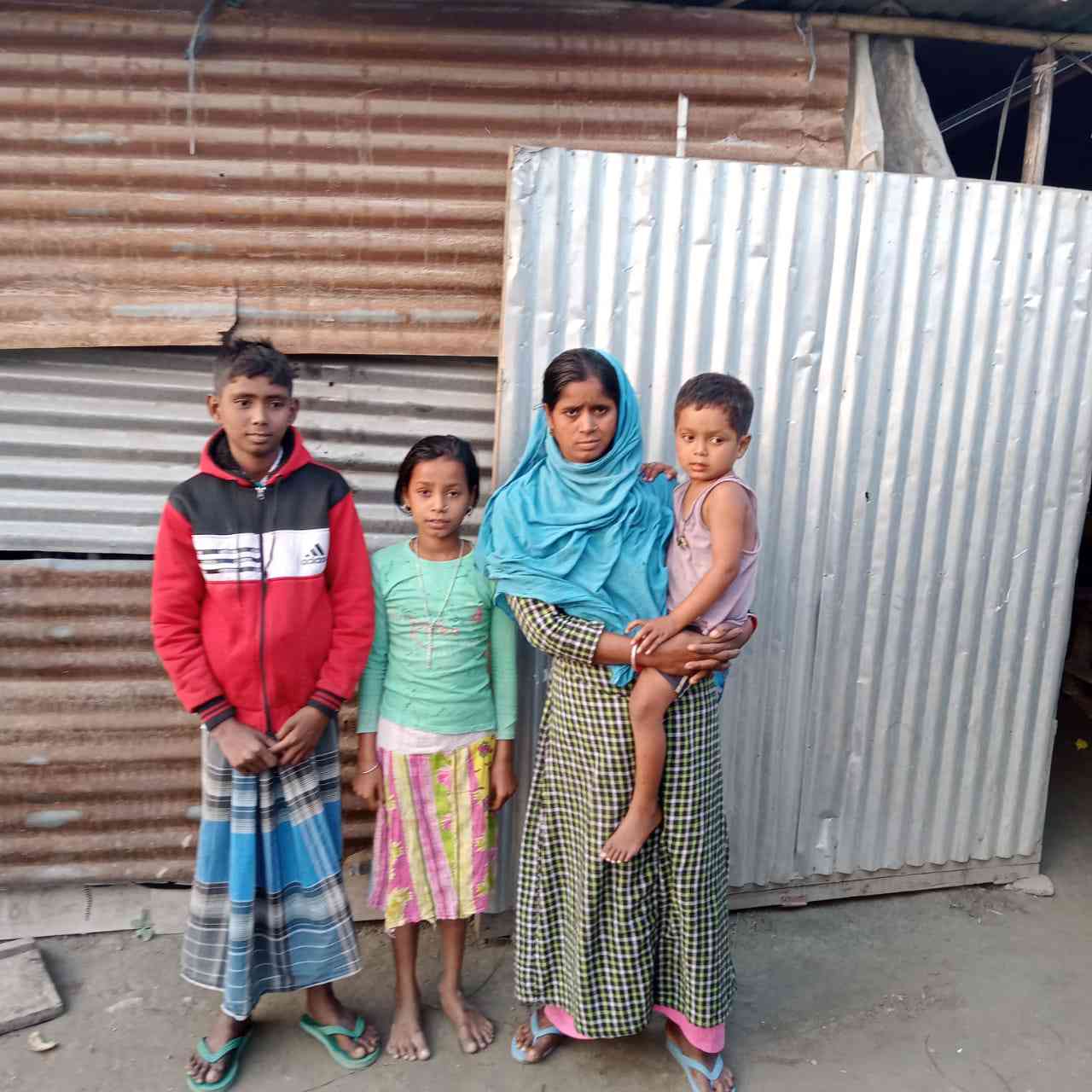
A community scattered
Dhalpur is surrounded on three sides by the Brahmaputra and criss-crossed by many rivulets. As in most char or temporary riverine islands in the state, land here is fertile but often eroded by the river.
The community of Miya Muslims, who were evicted in 2021, had been living there since the 1980s. They made a living by growing seasonal vegetables, paddy, maize, and jute and selling them to retailers in Guwahati.
After the demolitions, the Assam government relocated most of them to Dalgaon, 50 km away, where they were given a bigha of land each – though they were not given any land titles. About 300-odd families did not even get a bigha of land and have moved the high court.
The displaced people said the rehabilitation site in Dalgaon lacks basic infrastructure with no roads, electricity and toilets. The area is also prone to floods.
Several residents told Scroll that they have given up farming as there is not enough land. About 70-80% men have left Assam for either Guwahati, or further away to Andhra Pradesh, Karnataka and Kerala, they said.
“Most of them are now working as daily wagers,” Nazir Sarkar, a Darrang-based minority leader and retired teacher of Kharupetia College, told Scroll.
Zahurul Islam, a 28-year-old farmer, said his family used to cultivate 26 bighas of land before their homes were razed and their lands taken over.
“Now I work as a daily-wage labourer,” Islam said. “That too not regularly. I might get work four-five days in a week.”
Three of his brothers have moved to Andhra Pradesh and Karnataka in search of work. “They work on a prawn fish farm. There is no land or work here. What can we do?”
“If the government had provided us land, we would not have needed to come here,” Jainuddin Ahmed told Scroll over the phone from Tirupati district in Andhra Pradesh.
Before the demolitions, the 28-year old farmer grew vegetables and maize on seven bighas of land in Dhalpur. It was enough to support his family.
He moved to Andhra Pradesh right after, and now works for a fish company, as does his wife. “In Assam, we could save Rs 1 lakh annually. Here my wife and I work day and night to send our kids to school. Still, we cannot earn more than Rs 800 per day.”
Sarkar, the minority leader, added: “If the government allotted them seven bighas of land – one bigha for homestead and six bighas for cultivation – they would not have need to migrate to some other states.”
Under Assam’s land policy, the government can provide seven bighas to a landless individual. But under the Himanta Sarma government, only “indigenous” farmers are entitled to such relief. While there is no legal definition of indigenity in Assam, the law almost always excludes Miya Muslims.
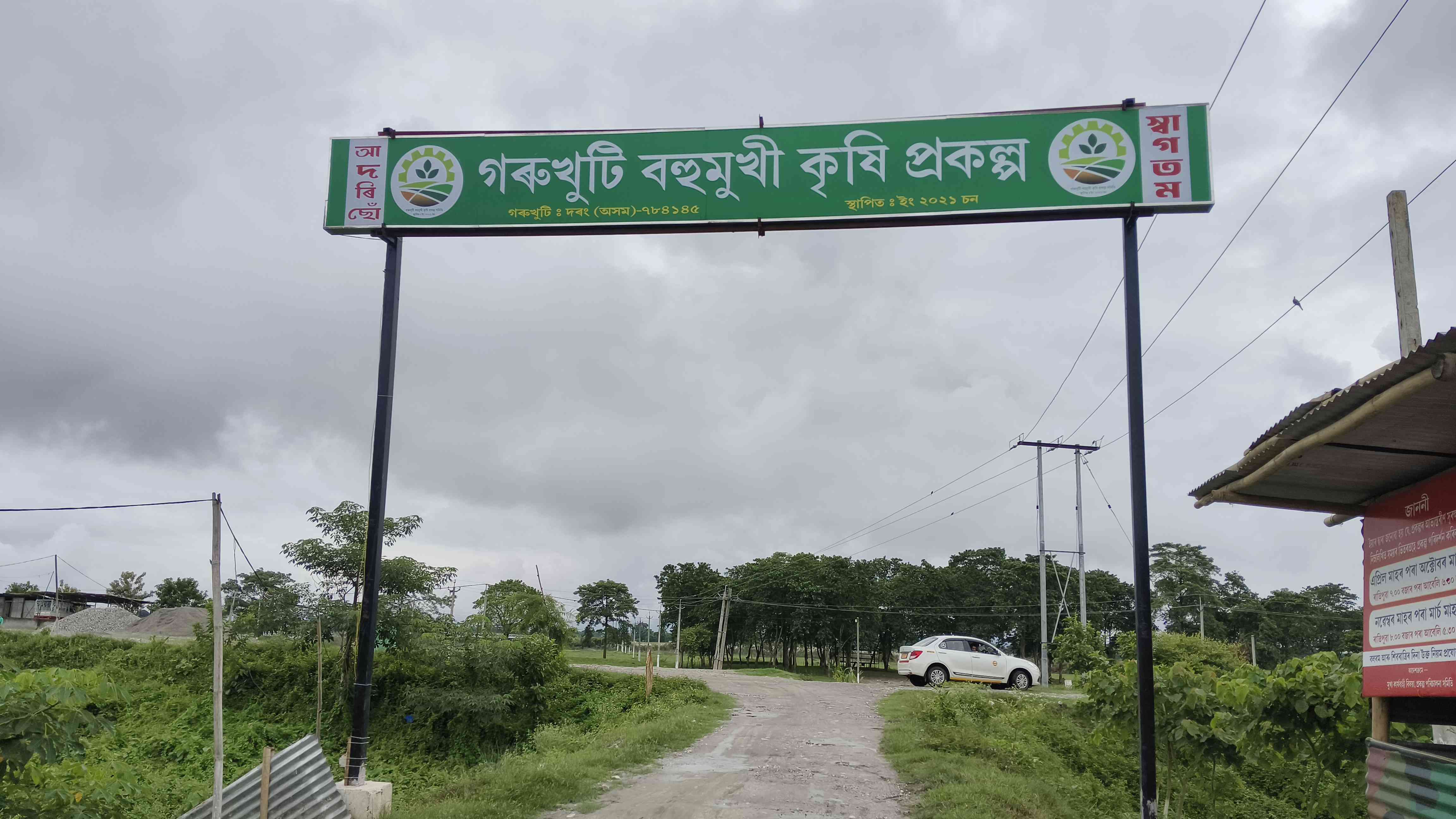
What came up on Garukhuti
While the evictions pushed Muslims of Bengali origin out of farming and into precarious labour, it has led to employment for about 300 “indigenous” people, including 50 women, who now work at the Garukhuti Agricultural project.
The project is headed by Sootea MLA Padma Hazarika. While most of the land is used for farming, six camps have been built on the site for the workers to live.
On a rainy morning on September 16, Scroll met four workers at the project.
“We do everything, from breaking up the earth to turning the soil, and then loosening it for cultivation,” said Dhanjit Nath, the 40-year-old worker from the neighbouring Udalguri district.
Around two years ago, Nath worked in a private firm in Punjab, where he used to earn Rs 15,000-Rs 18,000.
Here, he is paid Rs 9,000 a month. “It is less money but I don’t have other options,” Nath said.
The salary, too, does not clock in regularly. “It is the 16th of the month and we have not received our wages yet,” Nath said. “Despite promising that they will increase the wage to Rs 15,000 a month, they have not done it yet. If they don’t do so, we have to rethink. Many people have already left the project.”
His colleagues also complained about the low wages. “We are skilled labourers but we are not getting even Rs 500 as daily wage,” Prasanta Boro, another worker said.
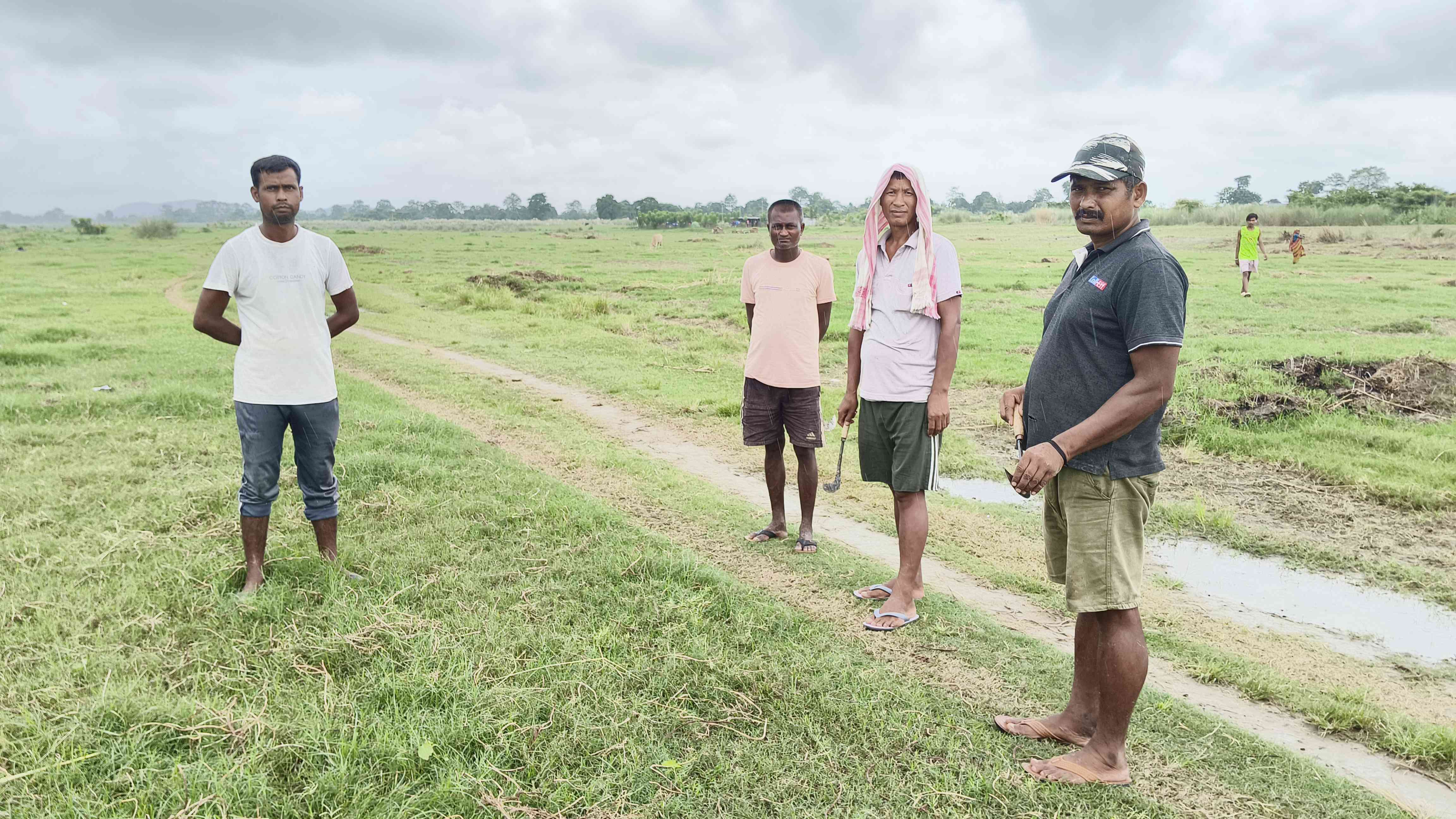
In the Garukhuti and Rajapukhuri villages, there are mixed feelings about the project, even among those ethnic Assamese residents who supported the eviction of Miya Muslims.
“The land belongs to the government and the government has taken it back,” Hemchandra Nath, a 66-year-old cattle grazer and resident of Rajapukhuri, told Scroll. “Some 50-100 people may have found work there but the project is not helping our village as such.”
Nath said that in the 1960s, his family used to directly cultivate the land and harvest the produce. “But now it goes to the government and their leaders.”
“If the project was controlled by local residents, it would have been different,” he added.
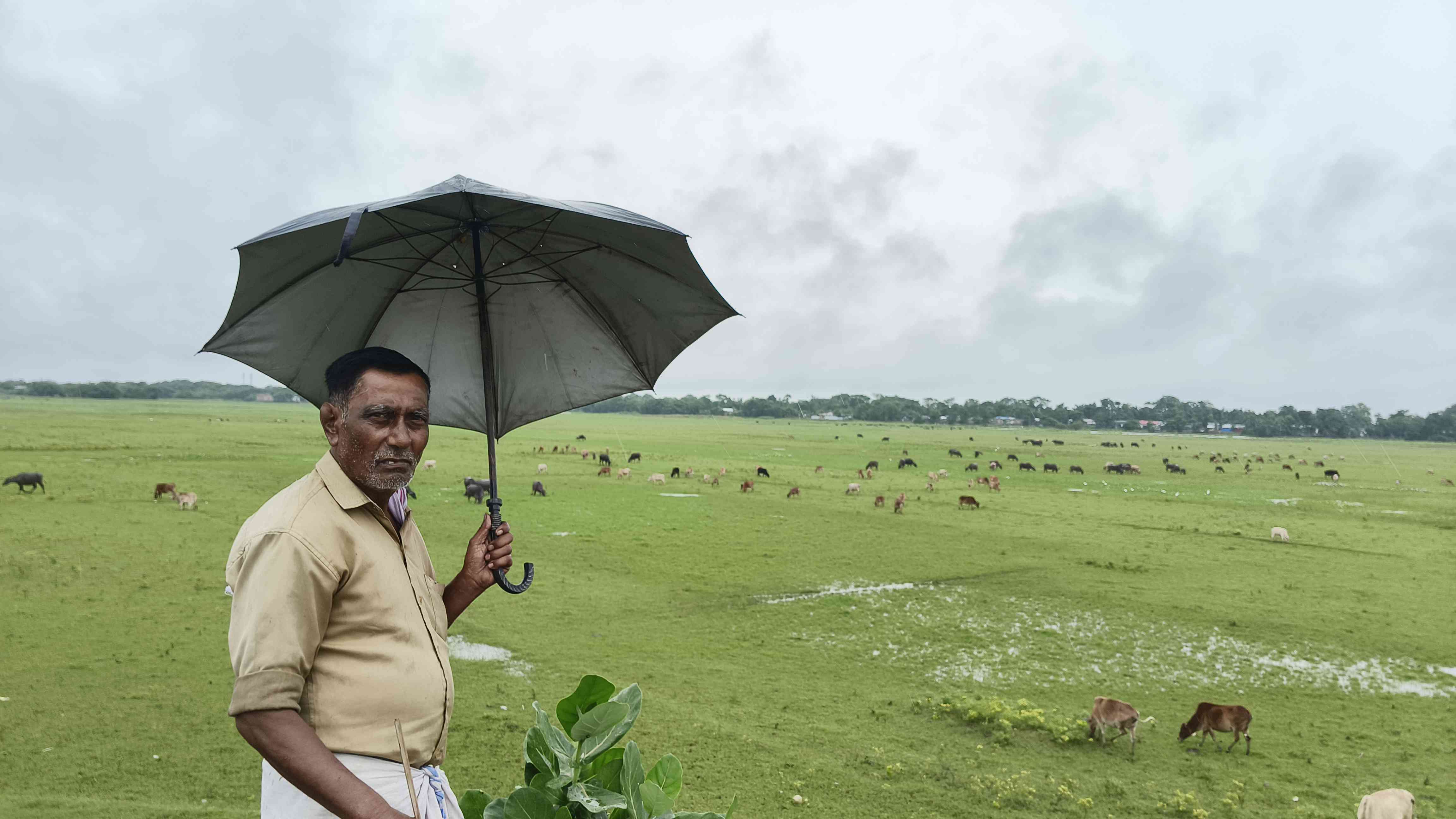
‘A flop show’
The state’s agriculture minister Atul Bora has admitted that the project has not yielded the desired results.
The government pumped in Rs 16.1 crore over two years to implement modern farming techniques and scientific animal rearing practices in the project.
But, as per the minister’s own statement, the government earned Rs 1.51 crore.
“The project has become a flop show,” said Rafiqul Islam, a former resident of Dhalpur village.
Islam grew vegetables and sold them in the daily market before he was evicted from Dhalpur. Now, he buys produce from others and sells them in the Kharupetia market, 50 km away.
Islam claimed that Bengali-origin Muslim cultivators got much better yields when they were farming.
Historically, Bengali-origin Muslim peasants are known for their skills in farming, even in difficult conditions. This was one of the reasons why they were encouraged by the British to migrate from East Bengal to Assam in the early 1900s.
“We could grow 20 quintals of maize in a bigha,” Islam said. But the government’s agricultural project grows only 3-4 quintals, he added. “They have not even been able to recover their costs, forget making profit.”
However, despite the poor yields, CM Sarma has defended the project.
“I am not here to calculate the profit or loss,” Sarma said a few months ago. “We reclaimed and freed 8,000 bighas from the possession of Bangladeshis. That alone is worth more than any financial gain.”
📰 Crime Today News is proudly sponsored by DRYFRUIT & CO – A Brand by eFabby Global LLC
Design & Developed by Yes Mom Hosting



